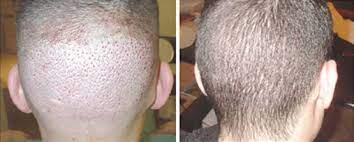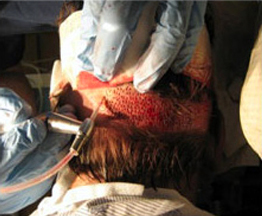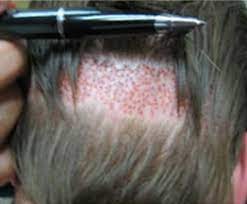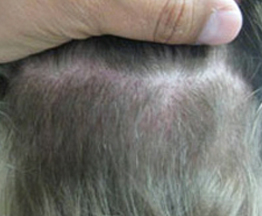Hair Transplant Surgery in Denver, CO
FUE Hair Transplant vs. FUT
There are several hair transplant methods doctors in Denver, CO can perform. The “strip” method or FUT (follicular unit transplantation) is the most commonly performed method. The FUE (follicular unit extraction) method, a minimally invasive method of hair transplantation introduced in the late ’90s, is the newest most advanced method of hair transplantation available today.

The “strip” method or FUT is a surgically invasive procedure. With the “strip” method, the hair at the back of the scalp is cut short. That section of the scalp is surgically excised. The wound created by the incision is then stitched up or stapled together. Next, the excised portion of the scalp is divided up and placed under several microscopes where technicians using sharp blades separate grafts into units of one to four hairs. While the technicians are separating the grafts, the physician creates the hairline and recipient sites using a needle or a specific blade. Once the recipient sites are created, the grafts are then placed into the sites using forceps. The grafts with a single hair are placed in the front for a more natural hairline. The rest are placed behind to give the recipient area density.
DR. MCCRACKEN PERFORMS FUE HAIR TRANSPLANTATION EXCLUSIVELY.
From a surgical standpoint, an FUE surgery is a very safe, minimally invasive, relatively minor procedure. It can also be done for women suffering from hair loss. With the FUE method, there is no need to excise a piece of the scalp because the follicles are removed directly from the donor area using a tiny 1 mm punch (punch sizes vary) and forceps. The punch is manually rotated to make a small circular incision in the skin around the follicular unit (hair follicles), which is then removed directly from the scalp using forceps. After the appropriate number of units has been removed, technicians separate the grafts into units of one to four hairs and these grafts are implanted much the same way as the “strip” method. With the FUE method, there is little bleeding and fewer complications than with the “strip” method. The procedure is performed with local anesthetic and no intravenous or intra-muscular sedation is required.


The benefits of the FUE method is minimal discomfort, no scalpel incision, no sutures, no linear scar, little to no risk of complications, quick recovery time, fewer activity limitations and a more natural-looking result than traditional strip methods (patients can wear their hair short without an unsightly scar).
This procedure is the most beneficial for the patient; however, the majority of hair restoration doctors do not offer the FUE procedure because there are some nuisances associated with it. First, doing it manually is very tedious and time-consuming, making the procedure too costly for most patients. Next, it is difficult to learn the procedure and unless the doctor becomes very skilled there is a risk for a high transaction (damage) rate of the follicles. Finally, forceps are used in a manual FUE to extract and implant the follicles which can easily traumatize the follicles as well. As a result, most doctors are not willing to spend the time to learn this procedure and they continue to do the easier, more invasive, faster “strip” method.



Finally, with the NeoGraft technology, the patient receives the benefits of the FUE procedure, and the physician benefits from the advancements of the technique made easier and with more efficient repeatable results.
With NeoGraft most patients can be candidates for an FUE hair transplant. Given the choice, most hair restoration patients would prefer the less invasive procedure over having the more invasive “strip” surgery. Even though many patients are good candidates for a NeoGraft, if they are not seen by a doctor that specializes in FUE or with the NeoGraft automated FUE device, they may not be given advice which is in their best interest.
The hair restoration patient also needs to understand how important choosing the right surgeon remains. Final hairline design results are dependent upon the skill and artistic abilities of the surgeon performing the procedure. Hair transplant procedures encompass both cosmetic and reconstructive surgery. These artistic skills and abilities can often be qualified by researching the results of other surgical and reconstructive procedures these surgeons do on the face and head.
It’s important to do your homework and pick a surgeon that is uniquely qualified to handle your hair restoration needs.
The NeoGraft Automated FUE is also a useful procedure to fix visible linear scars from previous “strip” surgeries. FUE can be used to ‘fill in’ or camouflage those old scars by transplanting new follicles into the area.
[templatera id=”275″]





 Schedule your Consultation Today
Schedule your Consultation Today